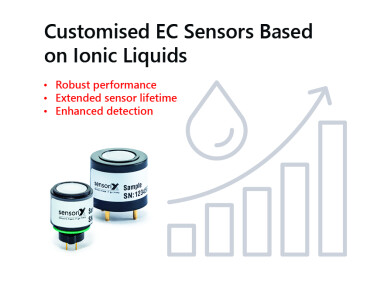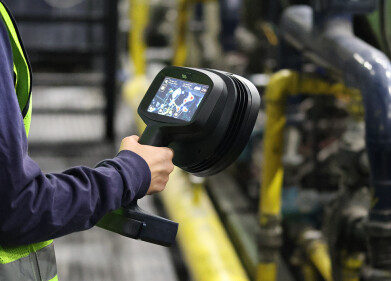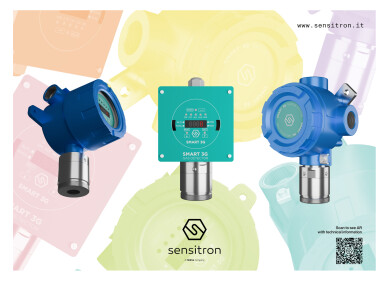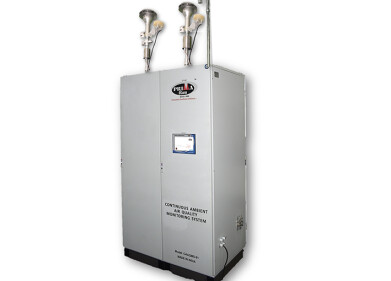Gas Detection
Market leading gas detection instrumentation for occupational health and safety to be displayed at A+A
Sep 19 2019
Ion Science will be showing a wide range of gas detection instrumentation for occupational health & safety monitoring applications at A+A 2019. Designed to protect workers in potentially hazardous environments, volatile organic compound (VOC) monitors on display will include the ‘Titan’ continuous benzene specific photoionisation detector (PID), ‘Falco’ fixed continuous PIDs, well proven ‘Tiger’ handheld PID and ‘Cub’ and ‘CubTAC’ personal PIDs. In addition, a ‘Mercury Vapour Indicator’ (MVI) for detection of mercury in just three seconds and ‘SF6’ and ‘GasCheck’ leak detectors will be featured. The company will also highlight its portfolio of ‘MiniPID’ sensors with patented humidity resistance and anti-contamination design, including the exciting new ‘AQ PID’ for integration into virtually any air quality monitoring application.
As the world’s first truly selective continuous, wall-mounted benzene monitor, the highly sensitive Ion Science Titan continuous benzene specific PID is capable of detecting benzene levels from 100 parts per billion (ppb) up to 20 parts per million (ppm). Like all Ion Science VOC gas detectors, Titan incorporates the company’s latest MiniPID sensor and patented fence electrode technology for unrivalled resistance to humidity and contamination, making it ideal for extended operation in harsh environments. Designed to operate in conditions ranging from -20 ºC up to +60 ºC , Titan is unaffected by changes in ambient temperature.
Ion Science’s Falco series of fixed continuous VOC monitors help ensure the on-going protection of workers operating in potentially hazardous industrial environments. Boasting fast response times, simple operation and several innovative design features, the instrument’s typhoon technology prevents condensation forming on the sensor removing the risk of it short circuiting. The external, intrinsically safe sensor facilitates quick and easy servicing without the need for a hot work permit.
The popular, easy to operate Ion Science Tiger handheld PID provides the widest measurement range on the market of 1 ppb to 20,000 ppm and offers advanced VOC detection and software features. It has a fast response time of just two seconds and can be connected directly to a PC via the USB offering rapid data download capabilities. The TigerLT is a streamlined, low cost version of the Tiger instrument whilst the Tiger Select boasts two mode operation for the rapid and accurate detection of benzene and total aromatic compounds (TACs).
The world’s smallest and lightest personal PID. Cub offers market-leading ppb sensitivity and a 10.6 eV lamp. It sets the standard in personal VOC monitoring and features an audible, vibrating and flashing LED alarm designed to give workers an early warning of exposure to hazardous gases. With a dynamic range of 0-5000ppm, Cub sits within the breathing zone and is comfortable and unobtrusive to wear.
Alternatively, CubTAC is a personal PID for the fast, accurate detection of TACs, including benzene. It has a 10.0 eV lamp utilising a special light filtering technology to give a reliable TAC concentration.
Accurate detection of VOCs is critical for the improvement of air quality and Ion Science’s new AQ PID overcomes the drift, cross sensitivities and humidity issues associated with metal oxide semiconductor sensors whist also being significantly lower cost than traditional PIDs. It can detect trace levels of VOCs over a long period of time making it ideal for both indoor and outdoor air quality monitoring applications.
The Mercury Vapour Indicator (MVI) detects mercury vapours in just three seconds. Unlike traditional gold film detection methods, the instrument’s dual beam UV absorption technology means MVI does not saturate or need regenerating between readings, helping to eliminate downtime. The MVI gives a real time response, provides continuous readings and offers two detection ranges: 0.1 to 200 and 1.0 to 1999 microgram/cubic meter.
Designed specifically for the detection of gas leaks, GasCheck instruments respond rapidly to any gas, or mix of gases. The advanced micro-thermal conductivity sensor of the GasCheck G accurately detects the smallest of gas leaks down to cc/sec, mg/m³ or ppm levels
Digital Edition
AET 28.3 September 2024
September 2024
Business News - ENVEA announces acquisition of APAQ Group - SICK and Endress+Hauser sign strategic partnership - Efforts to curb gas flaring intensify amid environmental concerns Air Monito...
View all digital editions
Events
Nov 06 2024 Ho Chi Minh City, Vietnam
Nov 12 2024 Tel Aviv, Israel
Nov 12 2024 Valencia, Spain
Nov 12 2024 Singapore
Plastics Recycling World Expo North America
Nov 13 2024 Cleveland, OH, USA



















